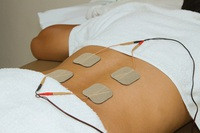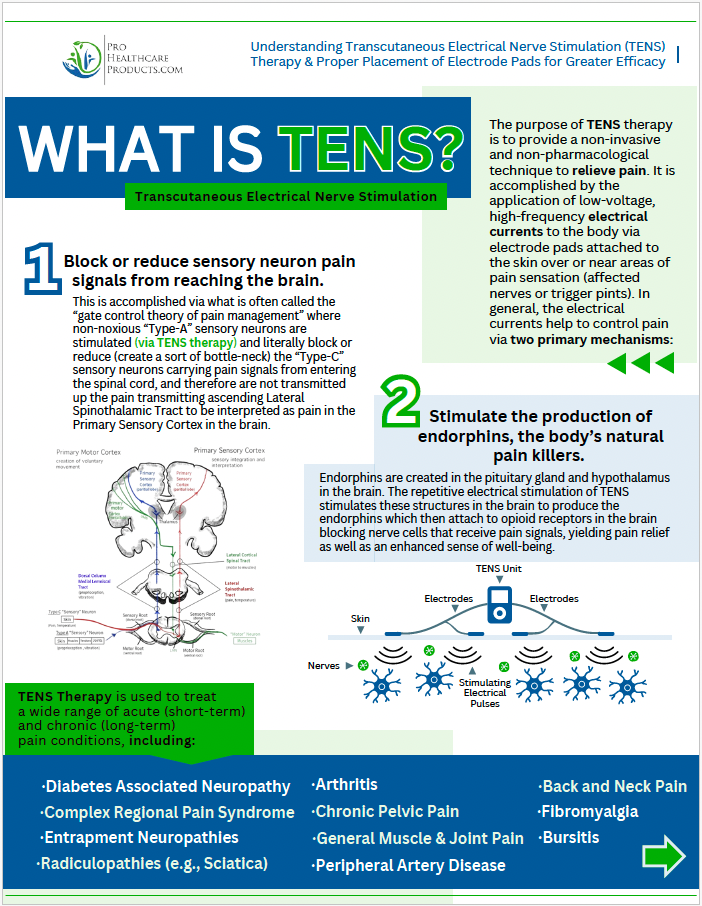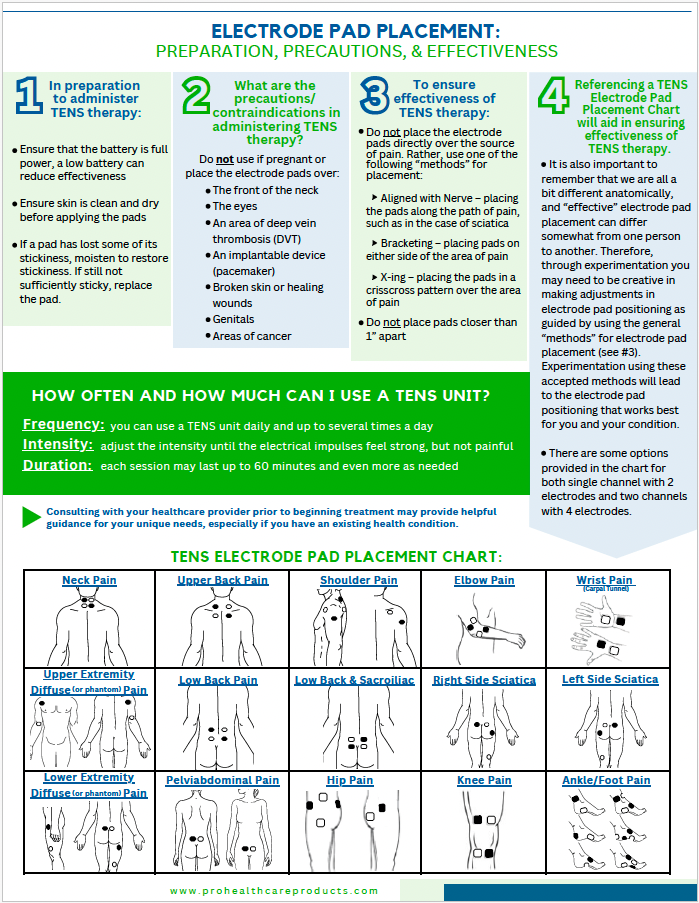 29th Jun 2015
29th Jun 2015
TENS Treatment for Back Pain
Working in a physical therapy office, I see a lot of back pain. Some days, it feels like that’s all we treat. Recently I looked at statistics to confirm what I was seeing is true. A recent study found that up to 84% of adults will have low back pain, 23% of those will develop chronic low back pain that lasts more than a month and 48% will have pain that lasts even longer. Low back pain is an epidemic and is a major cause for disability, workplace absenteeism and use of health care services (like physical therapy). And it makes sense, up to 80% of our workforce has sedentary, desk jobs which places excessive stress on back and hips. Unfortunately, this isn’t going to change. As someone working in physical therapy looking to treat low back pain it becomes important to have many tools to draw on because each case of back pain will resolve differently.
TENs Electrodes placed to treat back pain
Primarily, I’m a manual therapist. I like to feel the muscles to get a sense of what’s going on. While manual therapy (massage) and joint mobilizations can help decrease pain, these modalities are not always appropriate for acute pain. That’s where having a modality that can decrease pain in a gentle way is a necessary tool in the “treating back pain” toolbox.
Tens Unit for Low Back Pain
The use of TENS units date back to the 1960s with the introduction of the gate control theory of pain. According to the theory, stimulating nerves closes a "gate" mechanism in the spinal cord, and that can help eliminate the sensation of pain. TENS, or transcutaneous electrical nerve stimulation, is a back treatment modality that uses low voltage electric current to relieve pain. TENS treatments are typically done with a TENS unit, a small battery-operated device. During a TENS treatment for back pain, two electrodes are placed on the skin over an area of pain in the back. The electrodes send electrical impulses from the TENS unit to the skin that travel along nerve fibers and create a tingling sensation. Patients report feeling less pain when the impulses are delivered, because stimulating the nerves blocks other pain signals and helps the body produce endorphins, the body’s natural painkillers.
TENS unit placement for back pain
Many electrode sites are identical regardless of diagnosis. For example, a patient who has a cervical strain would use the same placement as a patient with cervical arthritis. However, there are some guidelines for placement regarding the type of pain experienced.
- For radiating pain: place the electrodes (not directly on) but near the spine, on either side.
- For specific joint or distal arm pain: Place the electrodes nearer the area of pain.
- For deep pain of myotome or sclerotome origin: place the electrodes several spinal segments more proximal than the segmental innervations shown.
- See our TENs Electrode Placement Guide for more
Using a TENS unit might seem counter-intuitive to a hands-on therapist. However, the instant relief, ease and efficiency of use make a TENS unit a handy tool. In acute cases, it can lower acute pain in order to allow for additional modalities and facilitate faster healing. Statistics show that low back pain isn’t going away. As such, physical therapists need more tools in their toolbox to fix it.
|
|
|








